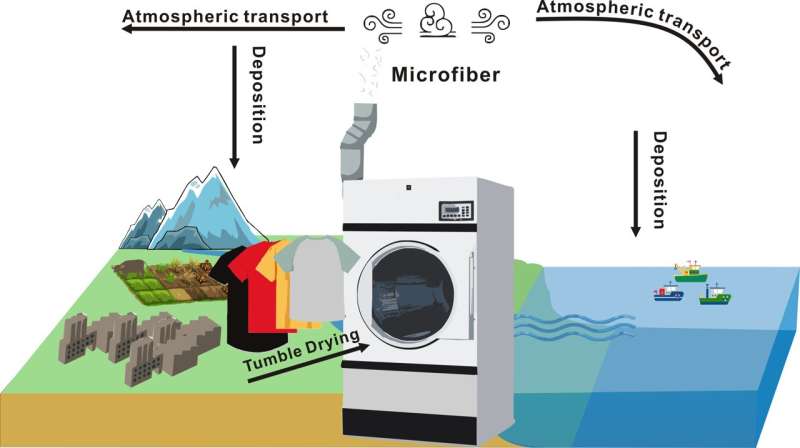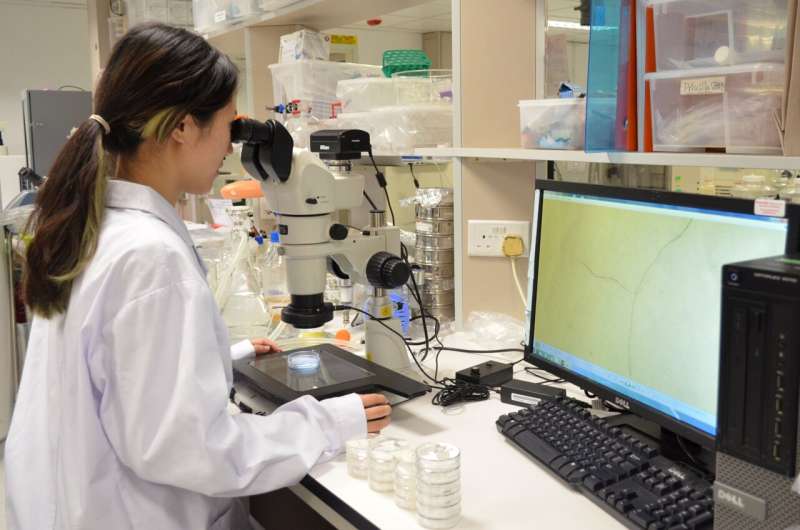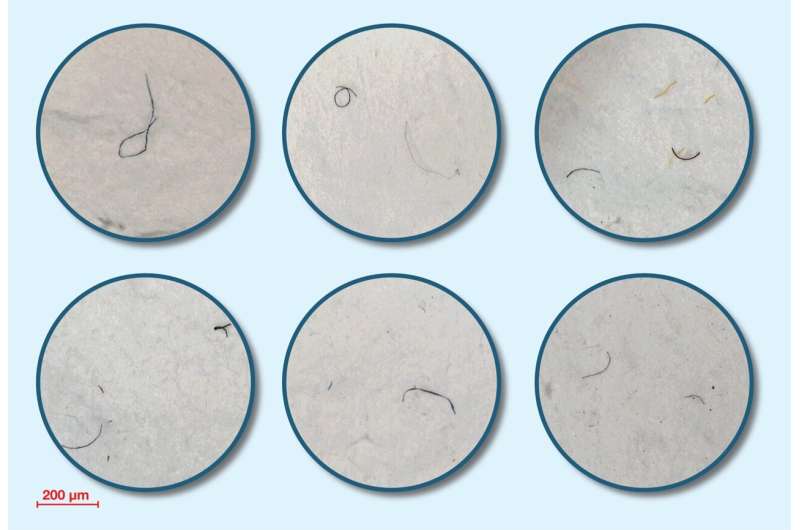Research finds clothes dryers are an overlooked source of airborne microfibers

It is well regarded that washing clothes can launch a massive range of microfibers into wastewater, but it is unclear irrespective of whether drying of clothing would have any impact on the atmosphere. A pilot examine by researchers from City University of Hong Kong (CityU) experiences that a solitary garments dryer can discharge up to 120 million microfibers annually—1.4 to 40 occasions of that from washing equipment. To management the launch of these destructive airborne microfibers, the group prompt that further filtration units should be put in for dryer vents as soon as feasible.
Dr. Zhang Kai, former Investigation Associate of the Point out Vital Laboratory of Marine Air pollution (SKLMP) in CityU and Professor Leung Mei-yee, Director of SKLMP and Chair Professor at Division of Chemistry in CityU co-led the investigate workforce. The do the job was printed in the tutorial journal Environmental Science & Engineering Letters, underneath the title of “Microfibers introduced into the air from a home tumble dryer.”
Microfiber air air pollution warrants attention
Microplastics are a expanding menace to aquatic organisms and their ecosystems. Aside from maritime and freshwater environments, microfibers have been found in air and terrestrial ecosystems. Exposure to airborne microplastics has been connected to adverse consequences on human health, which include serious obstructive pulmonary illness.
Artificial textile fibers, this sort of as polyester fibers, are broadly utilised in garments. But most of the posted analysis has centered on the technology of microfibers from washing machines, and experiments about the release of textile-affiliated microfibers into the ambiance are minimal. So, Dr. Zhang, Professor Leung and their investigation workforce carried out experiments to locate out the respond to.

Tumble dryers creating microfiber air pollution
In their research, CityU researchers verified the speculation that house tumble driers launch a big amount of plastic microfibers, getting a single of the key sources of microfiber air pollution in the atmosphere.
In their experiment, the scientists separately dried garments goods created of polyester and cotton in a tumble dryer that experienced a vent pipe to the outdoors. As the equipment ran for 15 minutes, they collected and counted the airborne particles that exited the vent. The outcomes confirmed that both of those sorts of apparel made microfibers, which the staff recommended arrives from the friction of outfits rubbing with each other as they tumbled all around.
They found that the dryer produced up to 561,810 microfibers in the course of 15 minutes of use. For each materials, the dryer introduced among 1.4 and 40 periods more microscopic fragments than washing equipment recorded in prior experiments for the exact volume of apparel. The launch of polyester microfibers enhanced with the escalating fat of dresses in the dryer, but the release of cotton microfibers stays frequent regardless of the body weight.
The exploration team estimated that on regular among 90 and 120 million microfibers are made and introduced into the outdoor air in a Canadian household’s dryer each individual year.
The release of a big amount of microfibers from synthetic fabrics in tumble dryers into the environment is a concern because they can be irritating if currently being ingested or inhaled, and can be transported long distances by wind. Also, they can adsorb and transportation pollutants for extensive distances.

Filtration units really should be set up to tumble dryers
Previous research have proven that while microfibers are launched from clothing washers into laundry water, but such wastewater is typically treated, removing some or most of the fibers ahead of discharging into rivers, streams or coastal waters. Even so, air from dryers usually passes through a simple lint filter and a duct just before getting vented right to the outdoor.
To ease the air air pollution brought on by microfibers, the workforce advised it is important to decrease the release of microfibers from tumble driers by each and every doable usually means. “In the long run, it is critical to make far better textiles that is additional put on-resistant, much more long lasting, and with increased environmental friendliness. But just before the realization of improved replacements for synthetic fibers this kind of as polyester, we can decrease the release of microfibers from tumble dryers by installing a very simple, engineered filtration devices at the stop of the emission pipelines,” Dr. Zhang advised.
By using 3D printing, CityU’s researchers have now designed ground breaking filters that stop microplastics from staying dispersed from washing equipment, and are in the process of designing a very similar method for tumble dryers. “To manage the release of these airborne microfibers, enhanced lint filters with smaller sized mesh dimension and an extra filtration system should be adapted for dryer vents,” Professor Leung added.
Danyang Tao et al, Microfibers Launched into the Air from a Family Tumble Dryer, Environmental Science & Engineering Letters (2022). DOI: 10.1021/acs.estlett.1c00911
Citation:
Analysis finds dresses dryers are an disregarded resource of airborne microfibers (2022, April 8)
retrieved 9 April 2022
from https://phys.org/news/2022-04-dryers-missed-resource-airborne-microfibers.html
This doc is issue to copyright. Apart from any reasonable working for the purpose of personal examine or research, no
component may perhaps be reproduced without having the written authorization. The content material is provided for data needs only.
